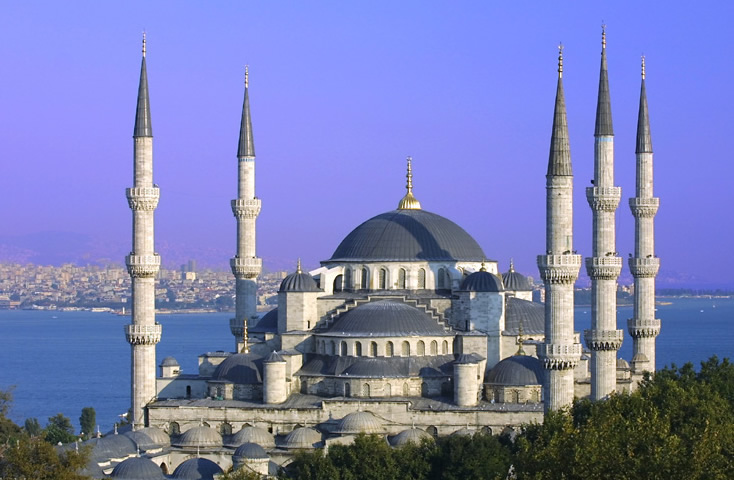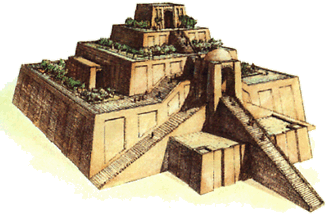*History 8 Mesopotamia Vocabulary
Return to Main Page History 8
Page 47-48
- 1. individualism is the theory that values the individual over the collective group.
- 2. idiosyncrasy is a peculiar characteristic of an individual.
- 3. Basic Tenets
- 4. Mesopotamia
- 5. alluvial
- 6. silt
- 7. irrigation
Page 49-50
- 8. continuity
- uninterrupted in time; without cessation. "By looking at the beginnings and the long and continuing influence of the first civilizations one can become aware of what is universally relevant.In landscape and climate, one can see the long-term patterns which have shaped the region’s history. Against such deep continuities peoples have lived their lives and created their civilizations which in their turn have risen and fallen.Living links with that deep past still survive. In the deep south of the plain, today’s Marsh Arab settlements must look much as the Ubaidian and Sumerian settlements once did, scattered along the alluvium: built on man-made islands in the fresh-water lagoons where they live by fishing, cutting the reed beds, and cultivating the rich soil along the shores. Their elaborate reed houses, some up to 100 feet long, and their slim and elegant boats sealed with natural bitumen, are still built in the same fashion as was depicted 5000 years ago in Sumerian art.
- Here it was still possible, at least up until the first Iraq War and its aftermath, to enter into a world which recalls the early myths. A world of small artificial islands each with a reed house, barn, or guest hut (mudhif), clay kiln and bread oven and a painted boat. Here a single family might live with their water buffalo". RB
- 9. mosque: A mosque is a place of worship for followers of Islam, who are called Muslims. There were no mosques in ancient Mesopotamia because Islam was invented in the ninth century. However,there are many of them in modern-day Mesopotamia because Islam has become one of the area's major religions. This particular Mosque is the "blue mosque" in Istanbul. Francie Williams

10. mudhif: A mudhif is a kind of guest hut built alongside the reed houses of marsh-dwelling denizens in southern Mesopotamia, both ancient and modern. Francie Williams

11. Apsu
Apsu is the main god and the god of the waters under the earth. It was said he created man from clay. His wife was Tiamat, the great mother goddess and goddess of the salt waters. His children were Mammu, Anshar, Kishar, Lahmu, Lahamu. He was later killed by Ea the god of wisdom, waters, crafts, writing, building, farming, magic, and men's work.
Apsu is also the body of fresh water that once existed outside of Eridu, the waters from which life emerged RB
for more http://www.gods-heros-myth.com/godpages/apsu.html
Gage.
Page 51-52
13. Homo Oeconomicus
14. Semitic
15. cunneiform
One of the earliest form of written expression. Started in Sumer around 3000 B.C. Cunneiform began as a way to make a lists of debts or goods, but its purposes soon grew. It started to be used to record the deeds of cities and kings. Cunneiform gave birth to the world's first great literature. Jake Chotiner

Sources: Manual for Cultural Foundations of Ancient Civilizations and Case Studies and Primary Sources Workbook and [1] (picture)
16. ziggurat
Weres temples to the gods that controlled the fate of the city-states of the Sumer civilization. First appeared around 5000 years ago. Stepped pyramid like structures with several levels, exterior stairways, and a shrine at the top. Jake Chotiner

Sources: Case Studies and Primary Sources Workbook and [2] (picture)
17. internecine Internecine welfare is the constant theme of the fist age of cities. The basic definition of internecine is mutually destructive, and harming to both or all sides. Involving conflict with a group or organization. Meagan Cooper.
18. exigencies An urgent need or demand for something. An example from the manual is page 52, when the people of Sumer were going through a dry spell and there was an exigencies for rain. Meagan Cooper.
19. ID SargonSargon of Akkad was an ancient Mesopotamian ruler who reigned approx. 2334-2279 BC, and was one of the earliest of the world's great empire builders, conquering all of the southern Mesopotamia as well as parts of Syria, Anatolia, and Elam (western Iran). He established the region's first Semitic dynasty and was considered the founder of the Mesopotamian military tradition. Madison Cotton
Sources: manual page 51 and [3]
Page 56
20. "Exile"
The exile when the New Babylonians , or Chaldeans, forced a large part of the Jewish population to relocate. This took place when Nebuchadnezzar marched his army to Judah and conquered it, deporting the Jews. Numbering about 10,000, these Jewish deportees were mostly craftsmen and upper class people. This deportation marked the beginning of the "exile" and the end of semitic domination of the Middle East. To find out more about the exile of the Jews, visit http://en.wikipedia.org/wiki/Jewish_diaspora.
http://en.wikipedia.org/wiki/File:Arch_of_Titus_Menorah.png -->Alex Daichman<--
21. Id Nebuchandnezzar and Zedekiah
Nebuchandnezzar was the king of ancient Babylon from 605-562 BC. He prevented major countries like Egypt and Syria from making advances on his territory. He also conquered the Phoenicians and the state of Judah. When he conquered Judah he forced a large population of Jewish people to relocate. Zedekiah was the king of Judah. When Nebuchadnezzar conquered Judah he captured Zedekiah and held him in Babylon.
Sources: Manual Page 56
22. ID Cyrus the Great Cyrus the Great concurred Babylon, ending Semitic dominance over Mesopotamia. He lead a great empire that shifted the center of the Middle Eastern world to Susa, his capital. For more information about him, go to: http://www.iranchamber.com/history/cyrus/cyrus.php
Sources: Manual Page 57

-Chris Gillet